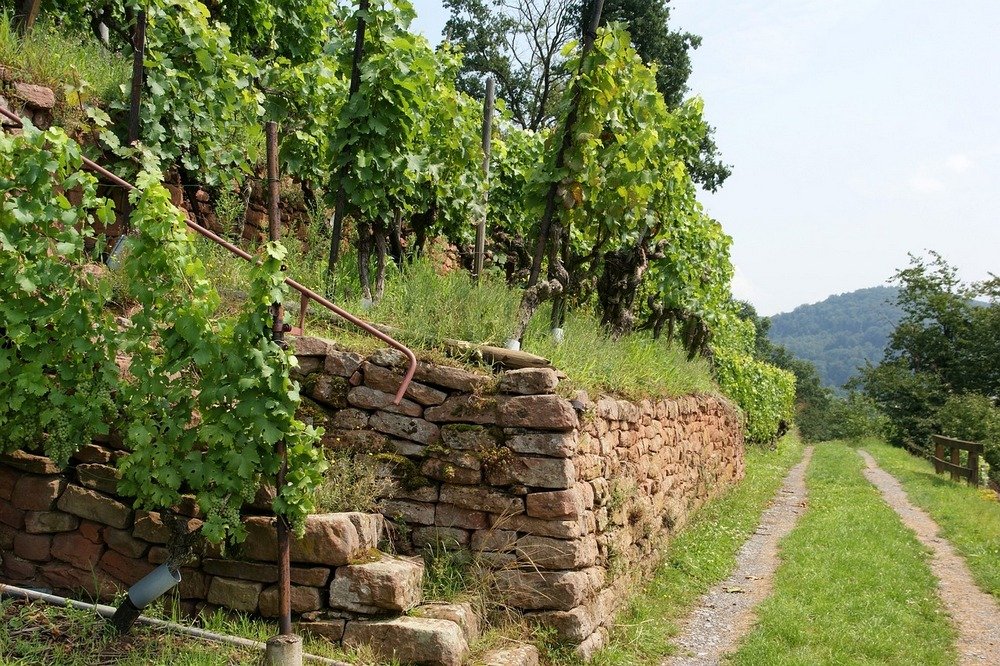Last Updated on March 8, 2024 by teamobn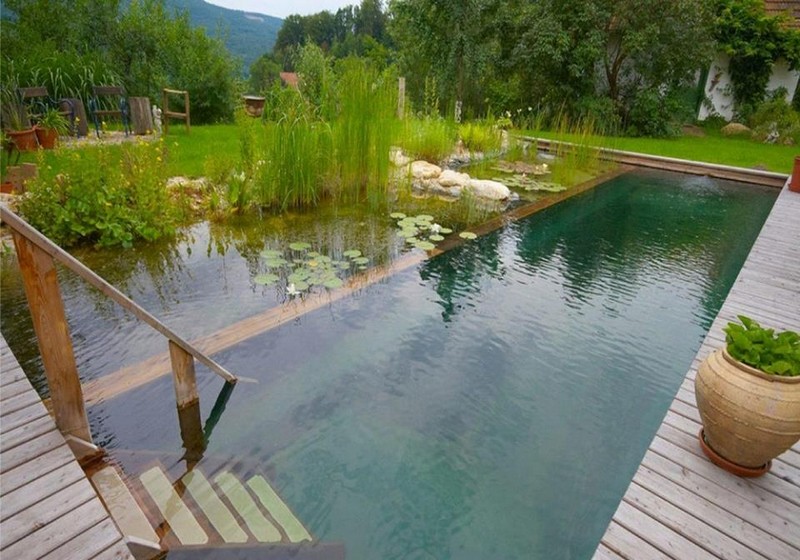
What are Natural swimming ponds?
A swimming pond or plunge is a man-made body of water that is used for recreational swimming, similar to a swimming pool, but natural water is used, meaning the water is not filtered, chlorinated, or otherwise treated.
Natural water bodies that have similar characteristics to swimming ponds include lakes, rivers, natural ponds, streams, and waterfalls.
These ponds also called natural pools, are a wonderful way to recreate nature in your backyard. Natural swimming ponds are swimming pools that use natural materials and plants to create a more natural environment.
They are often made with stone, sand, and gravel, and may include features such as waterfalls, streams, and rock formations. Plants are used to help purify the water and create a habitat for fish and other wildlife.
Natural swimming ponds can be used for swimming, wading, and fishing, and can be a beautiful addition to your backyard.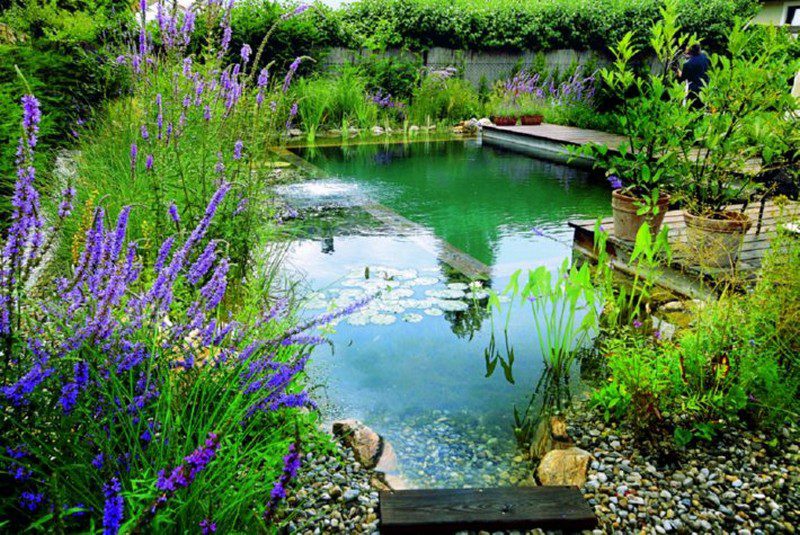
What are the Advantages of Natural Swimming Ponds?
There are many advantages of natural swimming ponds. They offer a much lower maintenance alternative to conventional pools, provide a natural habitat for wildlife, and allow you to swim in clean, chemical-free water.
They are also a great way to cool off in the summer and can be used for swimming, fishing, and even kayaking. Consider this comment from a member, Emma O’Connor:
“I would love one of these. As a swimming teacher by trade, I spend much time in chlorinated water…. not fun for skin, hair, or eyes.”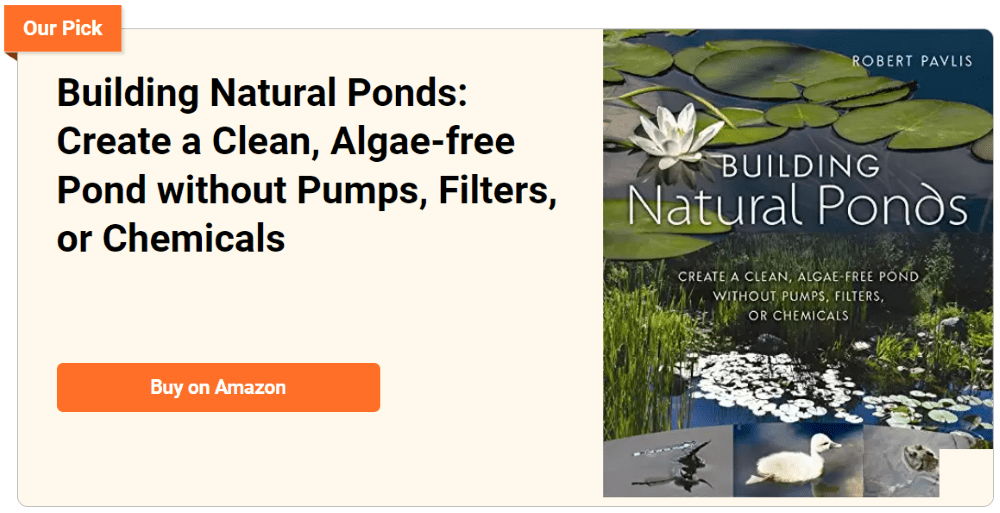
Wetlands have been purifying water for hundreds of millions of years so it should not surprise anyone that you can do the same in your backyard.
In fact, a well-designed natural pond is so efficient that they are becoming increasingly popular for use public – yes, as in municipal, pools. Tests have proven conclusively that the water quality is superior to any chemically treated, conventional alternative!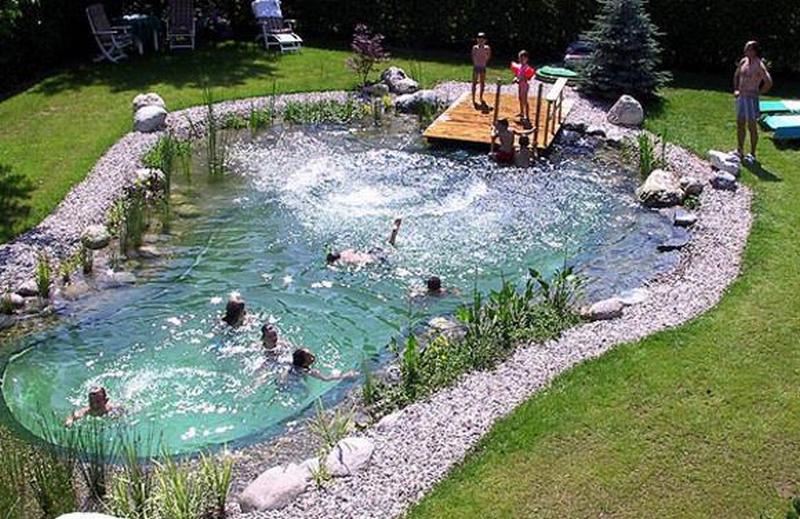
What are the Types of Natural Swimming Ponds?
There are three particular types of natural swimming ponds.
1. Cold Water Swimming Ponds
Natural swimming ponds are created from cold, fast-running water sources, usually springs. They are characterized by excellent water clarity and are often clear year-round. By their nature, natural swimming ponds are usually small and shallow, often less than 5 feet deep.
They are typically surrounded by a forest, with little or no development nearby. Their watersheds are considered to be some of the most biodiverse ecosystems and are protected in many states.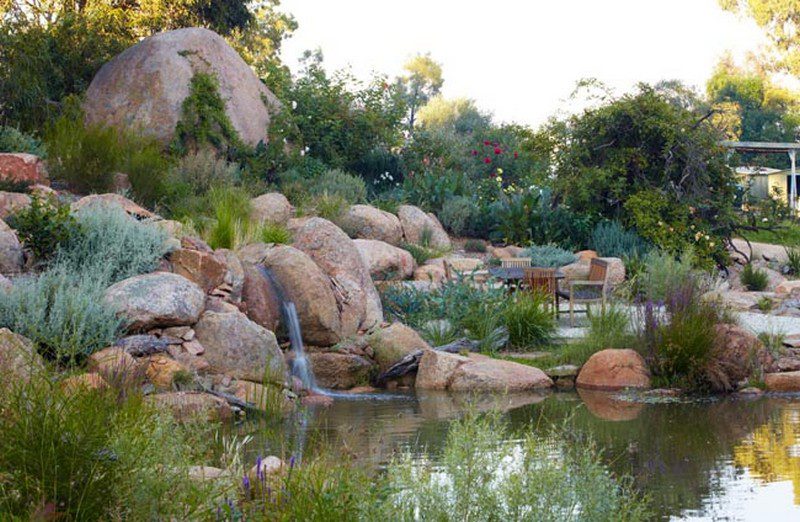
2. Warm Water Swimming Ponds
A warm water natural swimming pond is a pool of water of a temperature that permits comfortable swimming year-round and can be caused by a hot spring nearby. Warm water ponds are located in regions with a generally mild climate and are often man-made but can also be naturally occurring.
Swimming in natural, warm water ponds appears to be a healthier choice. Ponds do not have the same chemicals as swimming pools and contain beneficial minerals such as sulphur, magnesium, calcium, and sodium.
The water in swimming ponds is much warmer than in swimming pools providing exercise that is more challenging and stimulating to the body.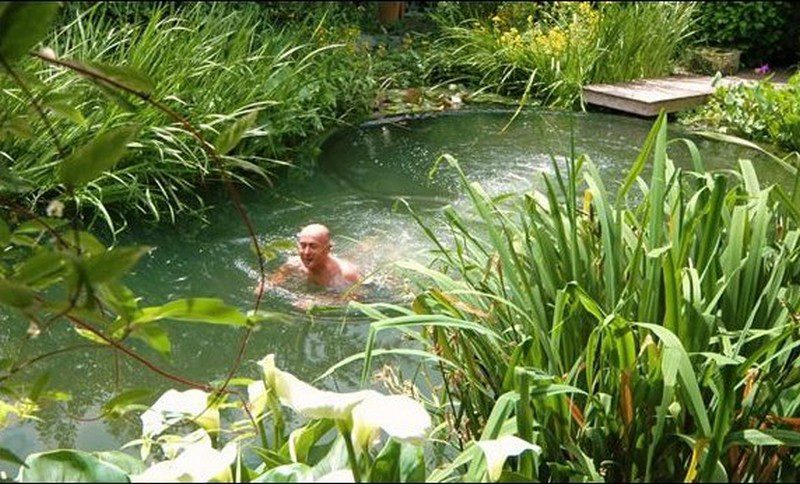
3. Saltwater Swimming Ponds
A saltwater swimming pod is a type of swimming pool that uses salt water as the main medium. It is also called a saltwater spa, saltwater pool, eucalyptus steam room, and other similar terms.
A saltwater swimming pod is a type of sauna that is used for relaxation, like a housewarming party idea, as a social activity, and for a variety of other purposes.
Saltwater swimming pools are built near the beach or sea since such pools use salt water for the water. Saltwater swimming pools are so much more beneficial than normal swimming pools.
Salt Water is better for the skin than normal chlorinated water. These pools are much more economical than conventional chlorine pools.
Saltwater pools are very easy to maintain and are much more environmentally friendly than traditional pools.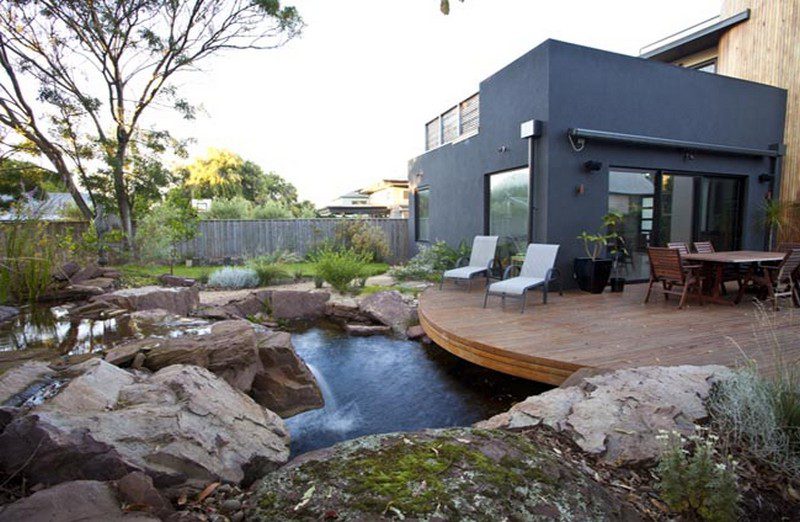
Scenic Natural Swimming Pond Ideas
Natural swimming ponds offer a refreshing and environmentally friendly alternative to traditional swimming pools. Here’s a detailed exploration of scenic natural swimming pond ideas to help you create your own oasis of relaxation and beauty.
1. Design Concepts
Natural swimming ponds mimic the appearance of natural bodies of water, such as ponds and lakes, blending seamlessly with the surrounding landscape. The design concept revolves around creating a visually appealing water feature that enhances the aesthetic appeal of the outdoor space while providing a safe and enjoyable swimming environment.
- Organic Shapes: Unlike conventional pools with geometric shapes, natural swimming ponds often feature irregular, organic shapes that mimic the contours of natural bodies of water. This enhances their visual appeal and helps them blend harmoniously with the natural landscape.
- Integrated Planting: One of the defining features of natural swimming ponds is the integration of aquatic plants, which play a crucial role in maintaining water quality and ecological balance. Incorporating native aquatic plants around the edges of the pond helps soften the transition between water and land, creating a more naturalistic and inviting environment.
- Shallow Planting Zones: Natural swimming ponds typically include shallow planting zones or regeneration zones where aquatic plants can thrive. These zones not only provide habitat for wildlife but also serve as natural filtration systems, helping to purify the water and maintain water clarity.
- Rock and Gravel Filtration: To further enhance water quality, natural swimming ponds often utilize rock and gravel filtration systems. Water circulates through layers of gravel and porous rock, where beneficial bacteria break down organic matter and remove impurities, resulting in clear and clean water.
- Water Features: Incorporating water features such as waterfalls, cascades, and streams can add visual interest and a sense of tranquility to the natural swimming pond. These features not only enhance the aesthetic appeal of the pond but also provide soothing sounds and a cooling effect during hot summer days.
2. Design Elements
- Pond Shape and Size: The shape and size of the natural swimming pond can vary depending on the available space and design preferences. Whether it’s a small, intimate pond or a sprawling water feature, careful consideration should be given to the overall layout and proportions to ensure a harmonious integration with the surrounding landscape.
- Edge Treatments: The edge of the pond plays a significant role in defining its aesthetic appeal and functionality. Options for edge treatments include natural stone coping, timber decking, or planted borders, each offering a distinct look and feel.
- Beach Entry: A beach entry or zero-entry feature allows for gradual access to the water, mimicking the experience of wading into a natural body of water. This design element is not only practical but also visually appealing, creating a seamless transition between land and water.
- Swimming Zones: Natural swimming ponds typically include designated swimming zones where water depth is sufficient for swimming and recreational activities. The size and shape of these zones can vary depending on the intended use and user preferences.
- Planting Scheme: The selection and placement of aquatic plants play a crucial role in the overall design and functionality of the natural swimming pond. Consider incorporating a mix of submerged, floating, and emergent plants to create a diverse and ecologically balanced aquatic ecosystem.
3. Aesthetic Features
- Water Clarity: Natural swimming ponds are known for their crystal-clear water, which is achieved through a combination of natural filtration, UV sterilization, and regular maintenance. Ensuring water clarity not only enhances the visual appeal of the pond but also contributes to a healthy and inviting swimming environment.
- Aquatic Plantings: Aquatic plants not only enhance the aesthetic beauty of the natural swimming pond but also play a crucial role in maintaining water quality and ecological balance. Consider incorporating a variety of native aquatic plants with different colours, textures, and growth habits to create a visually stunning and biodiverse aquatic landscape.
- Rockwork and Hardscaping: Incorporating natural stone, boulders, and hardscape elements can add visual interest and texture to the natural swimming pond. Rockwork can be used to create waterfalls, cascades, and streambeds, while hardscape elements such as timber decking and stone paving can define seating areas, pathways, and recreational zones around the pond.
4. Practical Considerations
- Safety Features: Safety should be a top priority when designing a natural swimming pond. Consider installing safety features such as pool covers, fencing, and signage to prevent accidents and ensure compliance with local regulations.
- Maintenance Requirements: While natural swimming ponds require less chemical treatment than conventional pools, they still require regular maintenance to ensure water quality and clarity. Maintenance tasks may include skimming debris, pruning plants, and cleaning filtration systems.
5. Environmental Benefits
- Ecosystem Support: Natural swimming ponds provide habitat for a variety of aquatic plants and animals, contributing to biodiversity and ecosystem health. Aquatic plants help oxygenate the water, while beneficial bacteria break down organic matter and nutrients, reducing algae growth and improving water quality.
- Water Conservation: Unlike conventional pools that require constant refilling and chemical treatment, natural swimming ponds utilize natural processes to maintain water quality and clarity. By minimizing water consumption and chemical use, natural swimming ponds help conserve water and reduce environmental impact.
Nnatural swimming ponds offer a sustainable and aesthetically pleasing alternative to conventional pools, blending seamlessly with the surrounding landscape while providing a safe and enjoyable swimming environment.
By incorporating organic shapes, integrated planting, and environmentally friendly design elements, homeowners can create their own oasis of relaxation and beauty that enhances the overall quality of outdoor living spaces.
Click on any image to start the lightbox display. Use your Esc key to close the lightbox. You can also view the images as a slideshow if you prefer 😎

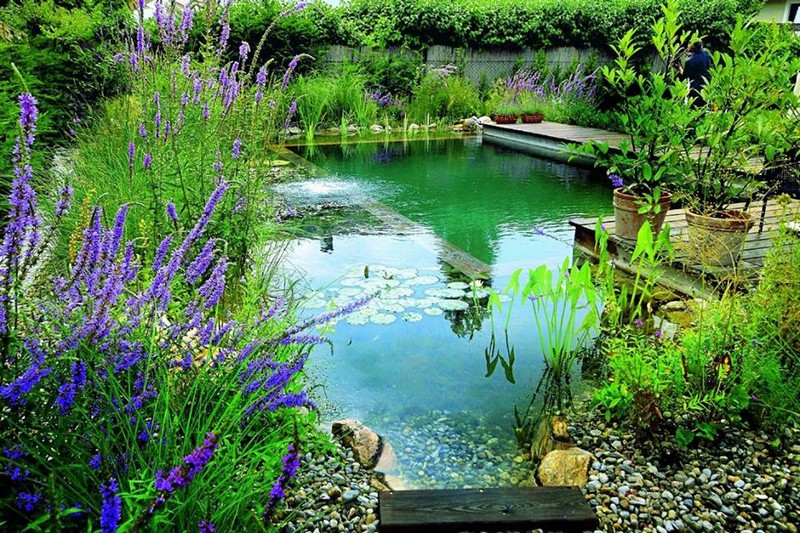
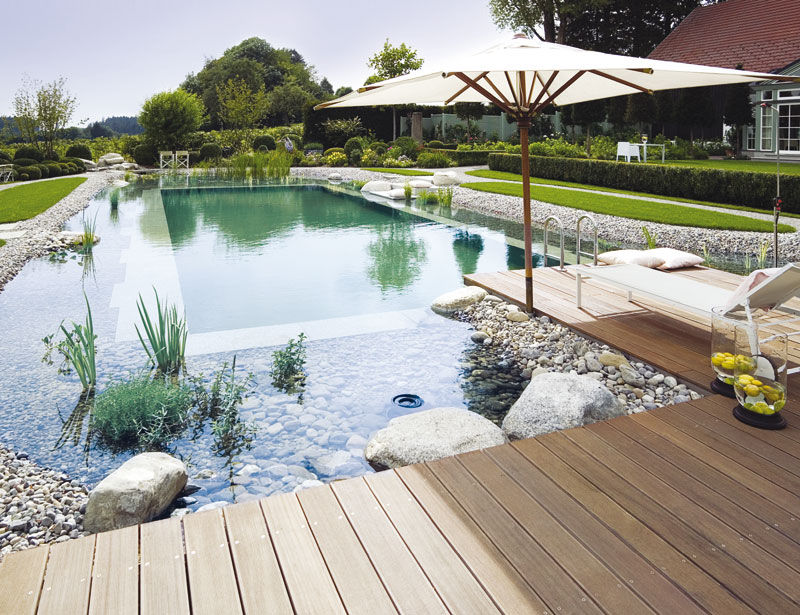
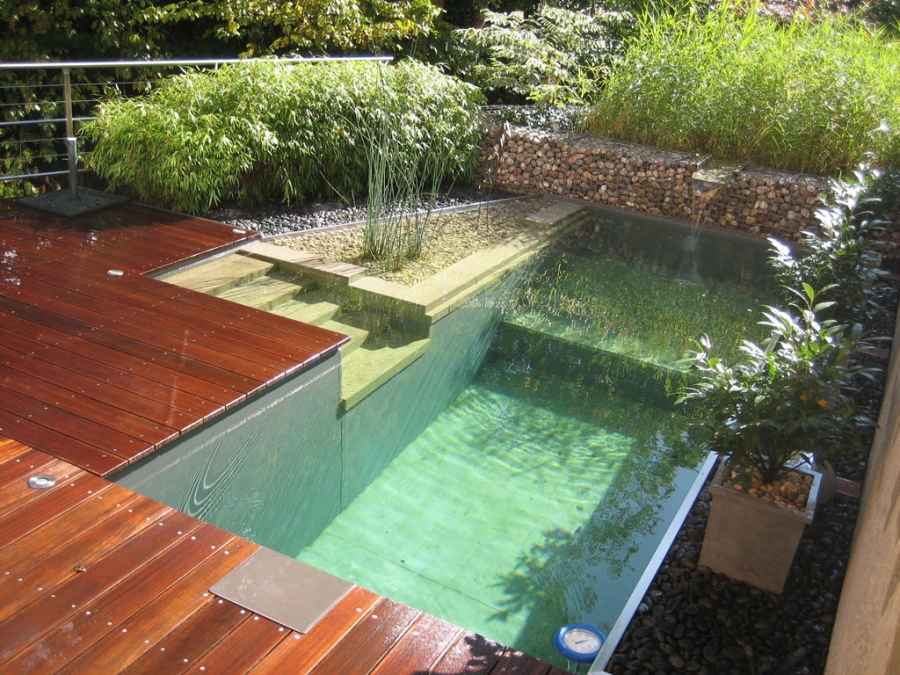
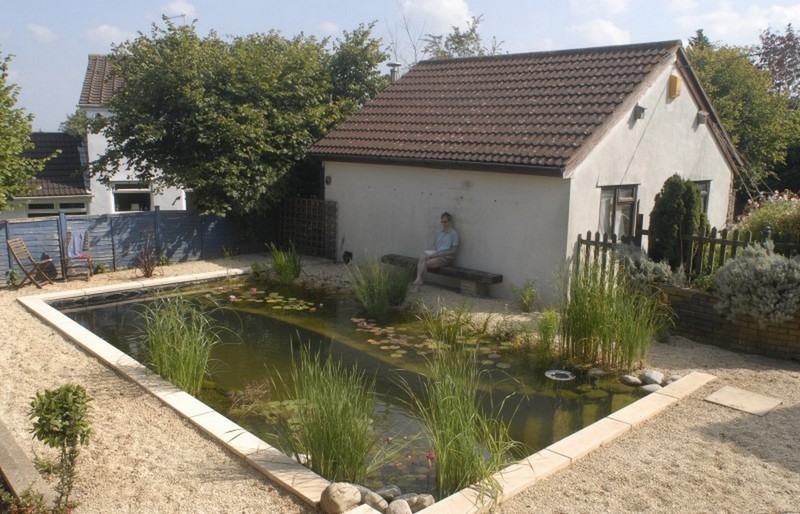
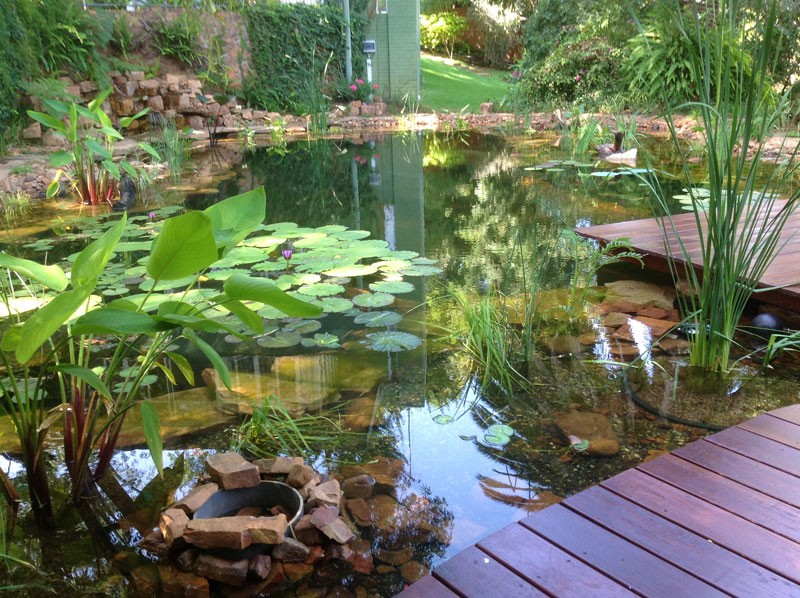
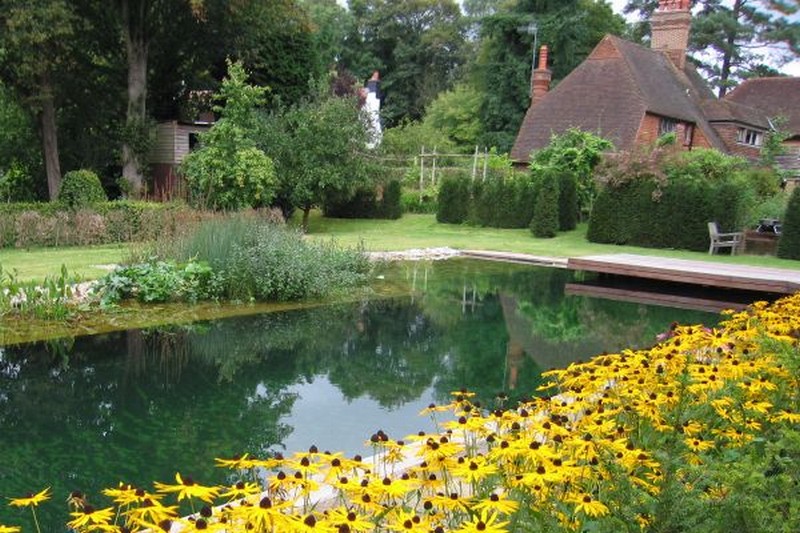
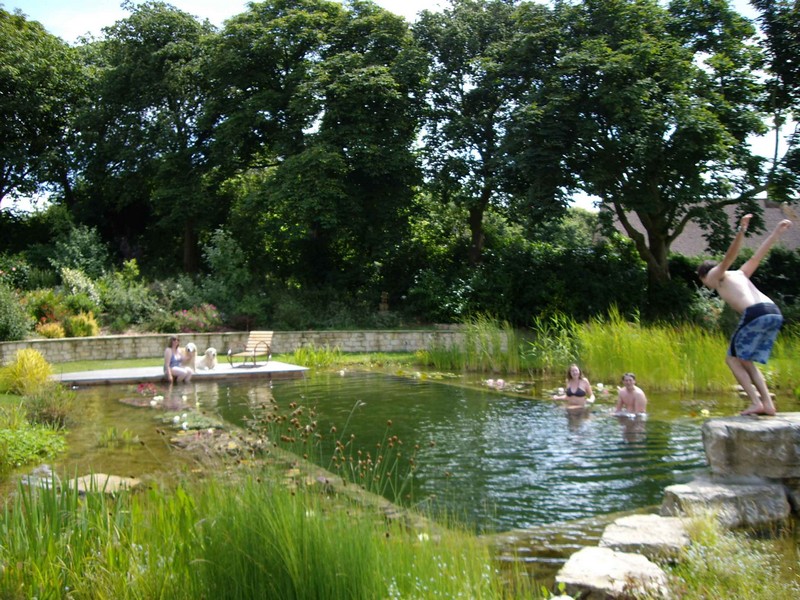
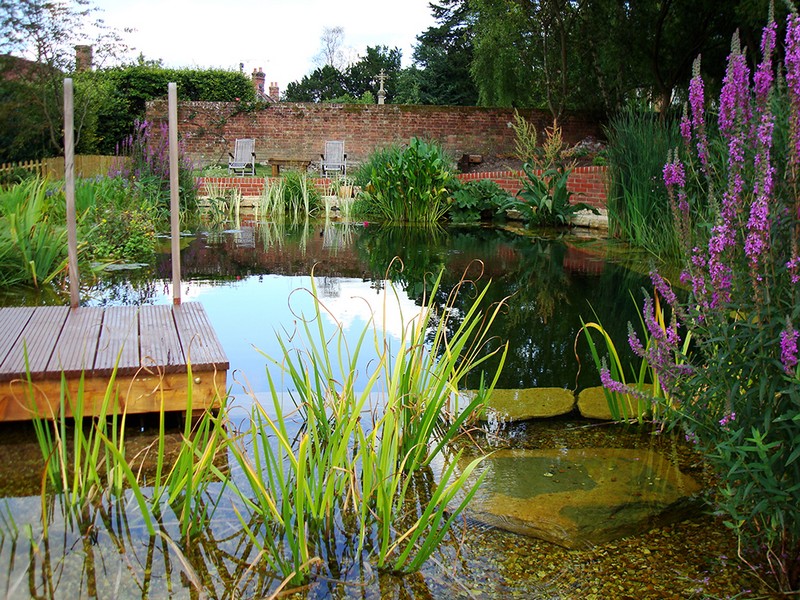

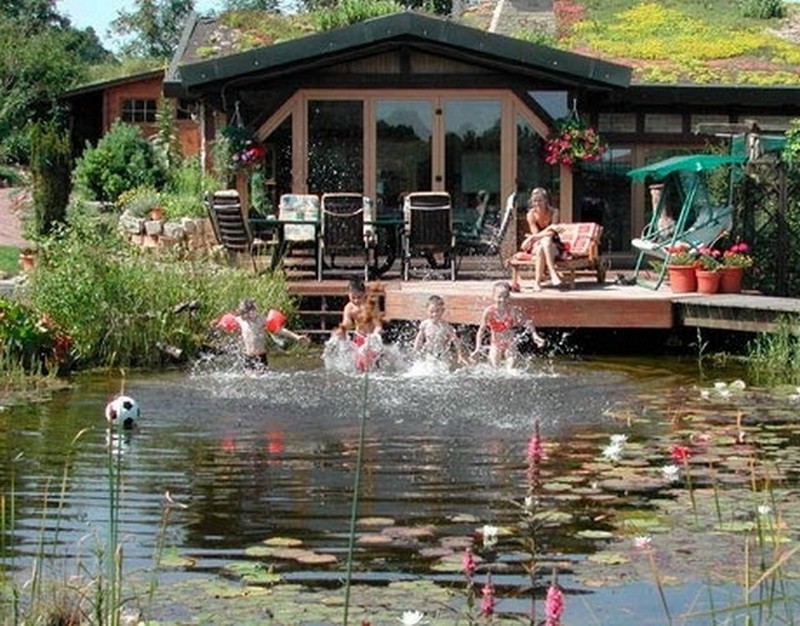
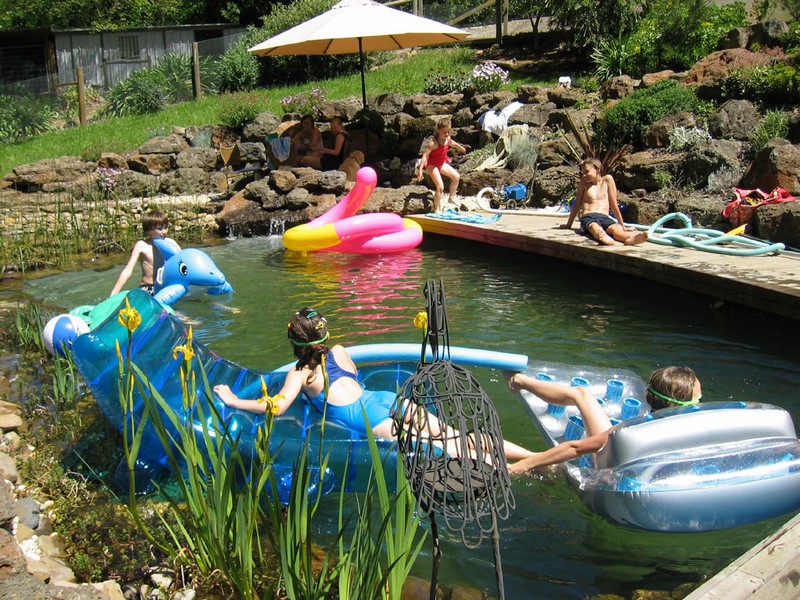
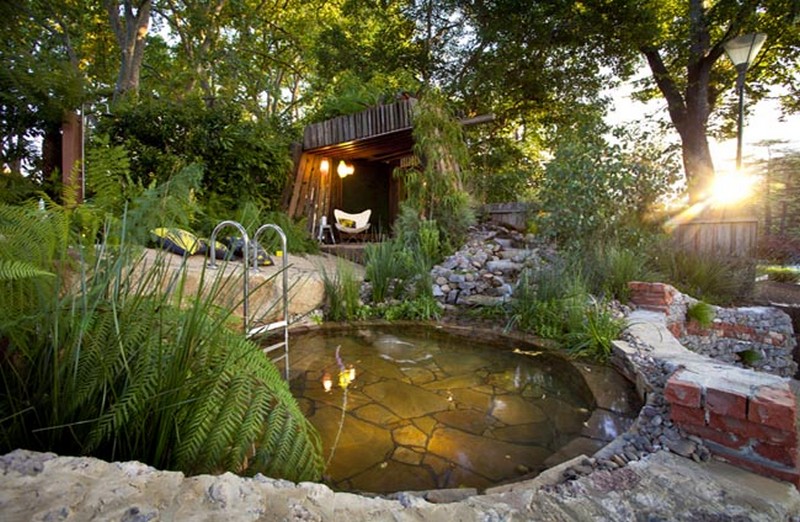
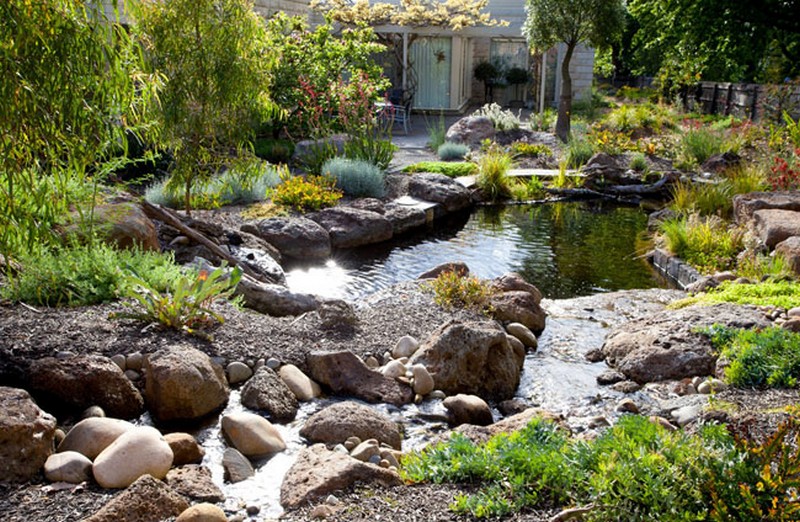
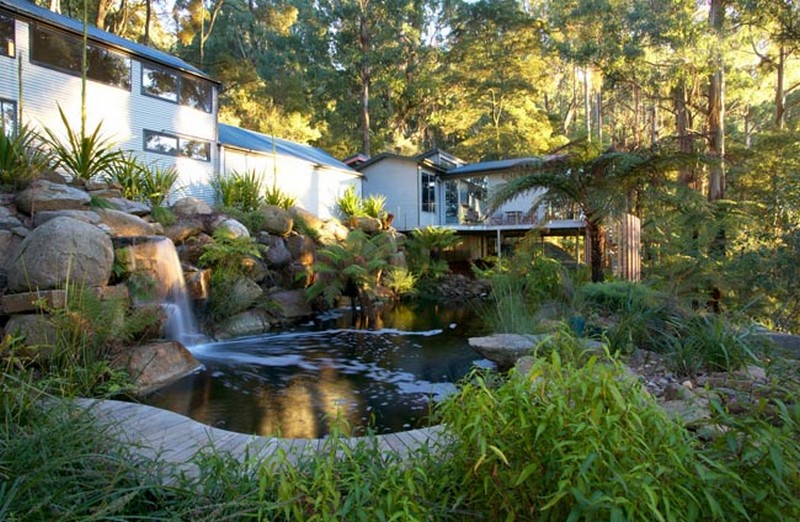

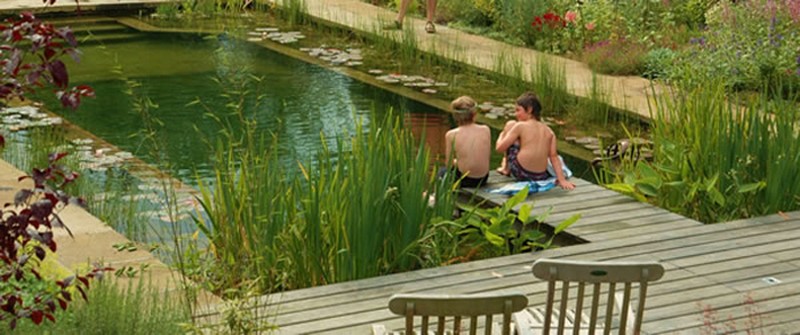
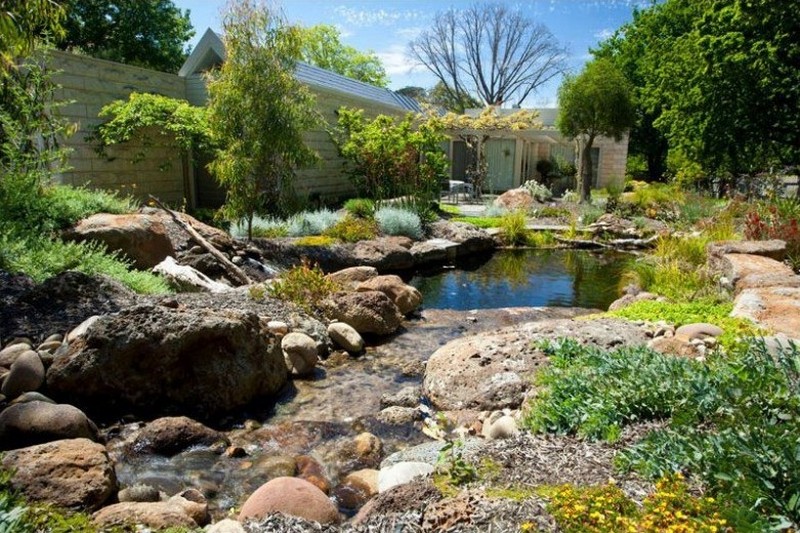
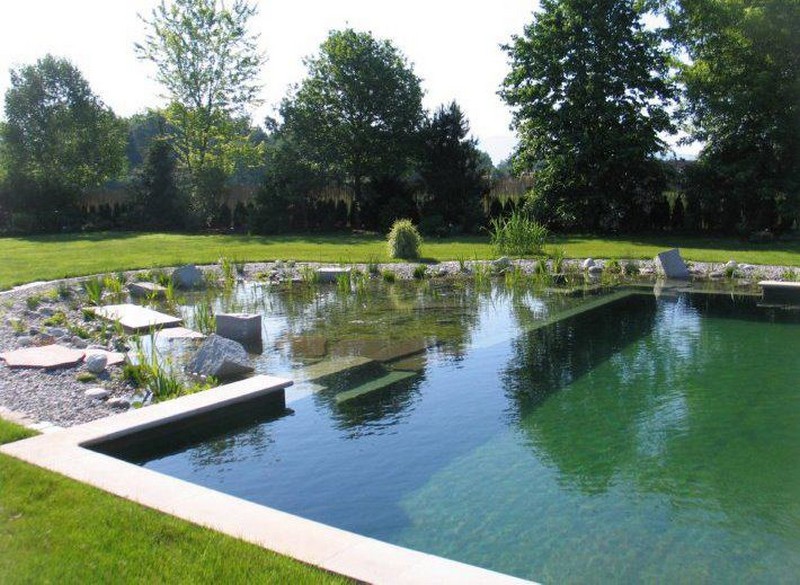


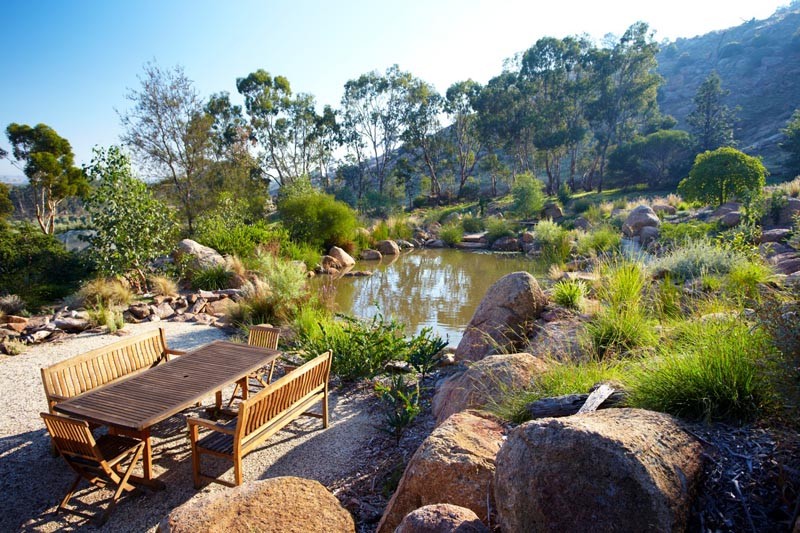
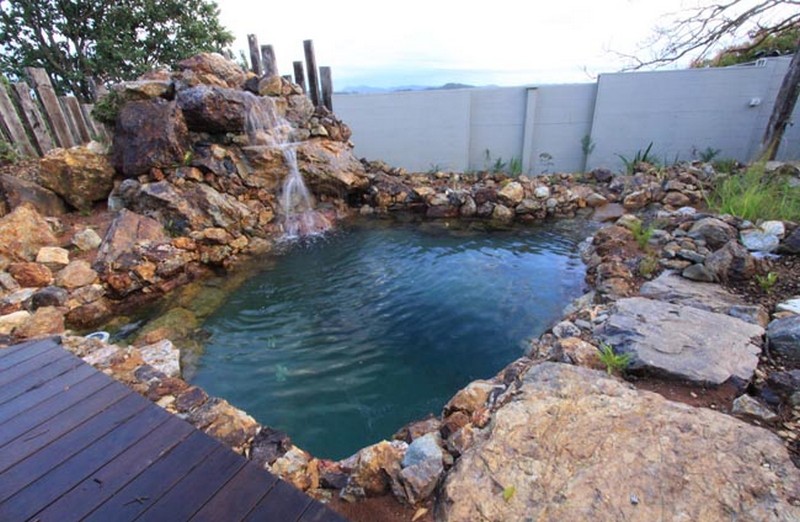
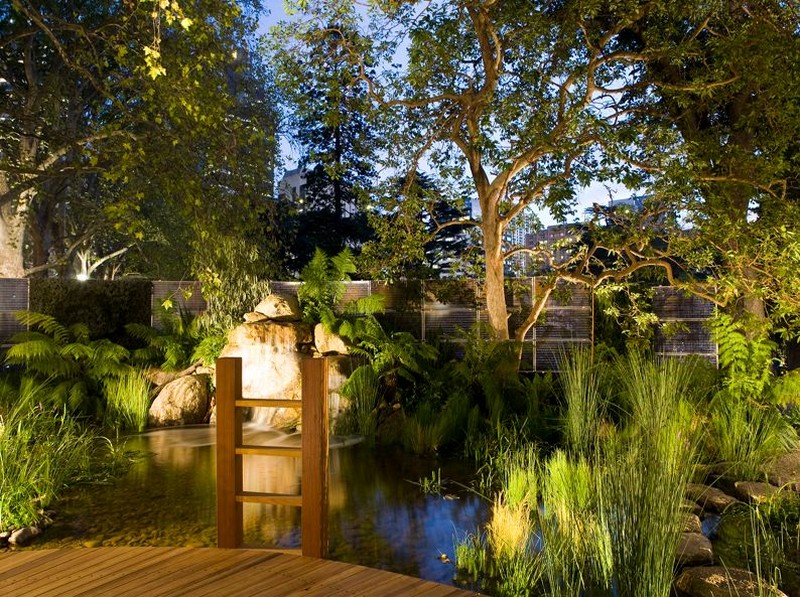

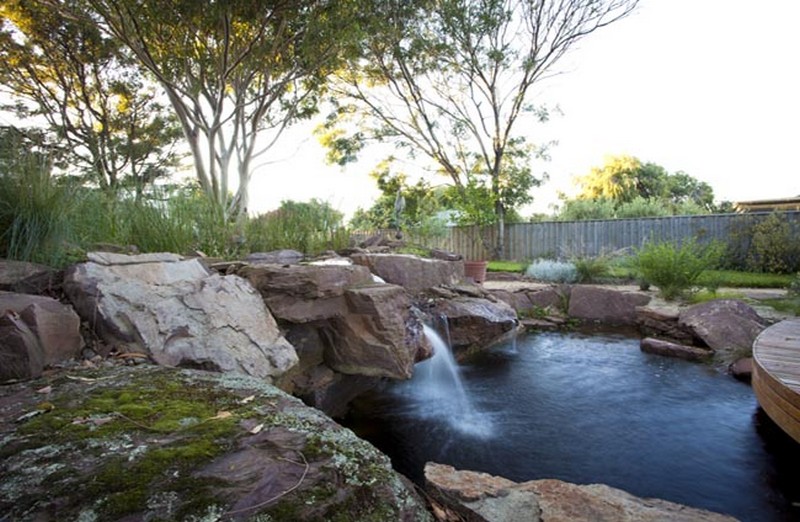
If you liked these, you will also like viewing these water feature ideas…
The Wrap Up
At the heart of natural swimming ponds lies a profound appreciation for the natural world. These aquatic sanctuaries celebrate the beauty of native plants, the tranquility of still waters, and the vibrant diversity of aquatic life.
By harnessing natural processes such as biological filtration, nutrient cycling, and aquatic plantings, natural swimming ponds create self-sustaining ecosystems that thrive in harmony with their surroundings. From the soothing sounds of flowing water to the gentle rustle of aquatic vegetation, these ponds engage the senses and evoke a sense of serenity and tranquility.
Beyond their ecological benefits, natural swimming ponds are also celebrated for their aesthetic appeal and design versatility. Whether inspired by classical landscapes, contemporary architecture, or rustic retreats, these ponds can be tailored to suit a wide range of styles and preferences.
From the rustic charm of a woodland pond to the sleek sophistication of a modern oasis, natural swimming ponds offer endless possibilities for creative expression and design innovation. With their lush planting zones, cascading waterfalls, and meandering streams, these ponds create captivating focal points that enhance the beauty and character of any outdoor space.
In an era of increasing environmental awareness, natural swimming ponds offer a compelling vision of sustainable living and environmental stewardship. By minimizing chemical use, conserving water, and promoting biodiversity, these ponds help reduce the ecological footprint of traditional swimming pools and promote ecological balance in urban and suburban landscapes.
With their emphasis on natural processes and ecological principles, natural swimming ponds serve as inspiring examples of how human habitats can coexist harmoniously with the natural world, fostering a deeper connection to nature and a greater appreciation for the beauty and diversity of life.
Beyond their ecological and aesthetic benefits, natural swimming ponds also offer numerous health and well-being advantages. Swimming in natural water is believed to have therapeutic effects on both the body and mind, promoting relaxation, stress reduction, and overall well-being.
Unlike chlorinated pools, natural swimming ponds provide a gentle and rejuvenating swimming experience that is free from harsh chemicals and artificial additives. With their clear, clean water and invigorating natural surroundings, these ponds offer a refreshing escape from the stresses of modern life, inviting individuals to reconnect with nature and recharge their spirits.
Natural swimming ponds are more than just aquatic features; they are living expressions of art, ecology, and lifestyle. By embracing the beauty of nature and the principles of sustainable design, these ponds offer a holistic approach to outdoor living that enhances the quality of life for both humans and wildlife.
From their serene beauty and ecological integrity to their therapeutic benefits and design versatility, natural swimming ponds embody a vision of harmonious living that inspires and delights all who encounter them.
As we continue to explore innovative approaches to landscape design and environmental stewardship, natural swimming ponds stand as shining examples of how we can create sustainable, beautiful, and enriching environments that nourish the body, mind, and soul.
Frequently Asked Questions
1. Are natural swimming ponds safe for swimming?
Yes, natural swimming ponds are safe for swimming when properly designed, constructed, and maintained. By incorporating natural filtration systems, water circulation technology, and regular water testing, natural swimming ponds provide a clean and healthy swimming environment that meets or exceeds regulatory standards for water quality and safety.
2. Do natural swimming ponds require a lot of maintenance?
While natural swimming ponds require less maintenance than conventional pools, they still require regular upkeep to ensure water quality and clarity. Maintenance tasks may include skimming debris, pruning plants, cleaning filtration systems, and monitoring water chemistry.
By following a regular maintenance schedule and investing in high-quality equipment, homeowners can keep their natural swimming ponds in optimal condition year-round.
3. Can natural swimming ponds attract wildlife?
Yes, natural swimming ponds can attract a variety of wildlife, including birds, insects, amphibians, and small mammals. Aquatic plants provide habitat and food sources for wildlife, while the presence of water attracts a diverse array of species. By creating a biodiverse ecosystem, natural swimming ponds promote ecological balance and support native wildlife populations.
4. How long does it take to build a natural swimming pond?
The construction timeline for a natural swimming pond can vary depending on factors such as size, complexity, and site conditions. On average, it may take several weeks to several months to complete the construction process, from excavation and grading to planting and filling.
By working with experienced professionals and carefully planning the project, homeowners can ensure a smooth and efficient construction process.
5. Are natural swimming ponds environmentally friendly?
Yes, natural swimming ponds are environmentally friendly alternatives to conventional pools, as they utilize natural processes to maintain water quality and clarity. By minimizing chemical use, conserving water, and supporting biodiversity, natural swimming ponds help reduce environmental impact and promote sustainability.
Natural swimming ponds provide a habitat for a variety of aquatic plants and wildlife, including fish, frogs, insects, and birds. These ponds act as mini-ecosystems, supporting biodiversity and enhancing local ecosystem health. By promoting the presence of native flora and fauna, natural swimming ponds contribute to the preservation of local biodiversity.
While traditional pool pumps and filtration systems consume significant amounts of energy to operate, natural swimming ponds rely on low-energy circulation pumps and passive filtration methods. This results in lower energy consumption and reduced carbon emissions, making natural swimming ponds a more sustainable choice in terms of energy use





